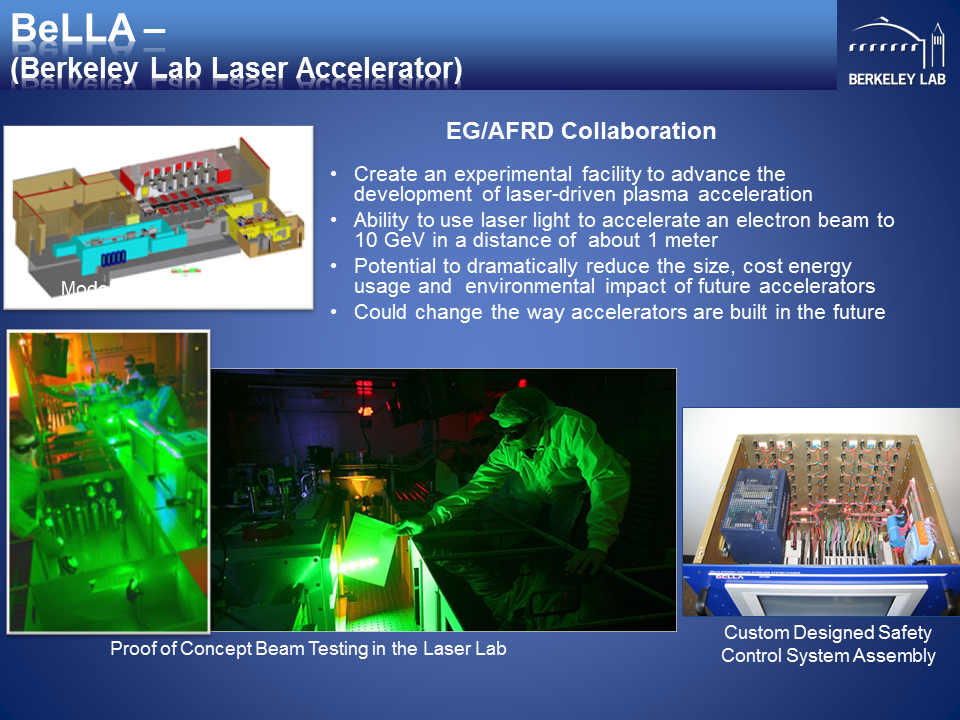Scientists have managed to accelerate subatomic particles to the absolute highest energies recorded to date using a compact accelerator. It was the first-attempt of its kind.
The experiment was carried out using a particular accelerator at the The Lawrence Berkeley National Laboratory.
The researchers accelerated electrons inside a tiny four inch tube of plasma up to an energy of 4.25 giga-electron volts. This is 1000 times greater acceleration compared to traditional accelerators and sets a world record for a laser-plasma accelerator.
According to the study:
“Multi-GeV electron beams with energy up to 4.2 GeV, 6% rms energy spread, 6 pC charge, and 0.3 mrad rms divergence have been produced from a 9-cm-long capillary discharge waveguide with a plasma density of ≈7×1017 cm−3, powered by laser pulses with peak power up to 0.3 PW.”
Dr. Wim Leemans, lead author of a paper on the test and director of the Accelerator Technology and Applied Physics Division at Berkeley Lab, said:
“This result requires exquisite control over the laser and the plasma.”
It was a very complex process and the results were a huge scientific achievement.
Dr. James Symons of the Berkley Lab, commented on the results:
“It is an extraordinary achievement for Dr. Leemans and his team to produce this record-breaking result in their first operational campaign with BELLA.”

Source: “Lawrence Berkeley National Laboratory”
The accelerator is small enough to fit on a tabletop and is tiny compared to the Large Hardon Collider at CERN that spans 17 miles. One day scientists hope that particle accelerators could all fit on a desktop as technology advances, without having the need to use so much space.
The Berkeley Lab Laser Accelerator (BELLA), built by the Thales Group, is well known for its precision in these type of experiments and it is producing some very impressive results for scientists. Despite its size, BELLA produces a quadrillion watts (one petawatt) of power.
“We’re forcing this laser beam into a 500 micron hole about 14 meters away. The BELLA laser beam has sufficiently high pointing stability to allow us to use it. With a lot of lasers, this never could have happened,” said Leemans.
Referring to the outcome of the experiment the team said that “with a lot of lasers, this never could have happened.”
BELLA is undoubtedly going to help revolutionize this area of science.
Reference:
“Multi-GeV Electron Beams from Capillary-Discharge-Guided Subpetawatt Laser Pulses in the Self-Trapping Regime”
Phys. Rev. Lett. 113, 245002 – Published 8 December 2014
Authors: W. P. Leemans, A. J. Gonsalves, H.-S. Mao, K. Nakamura, C. Benedetti, C. B. Schroeder, Cs. Tóth, J. Daniels, D. E. Mittelberger, S. S. Bulanov, J.-L. Vay, C. G. R. Geddes, and E. Esarey
